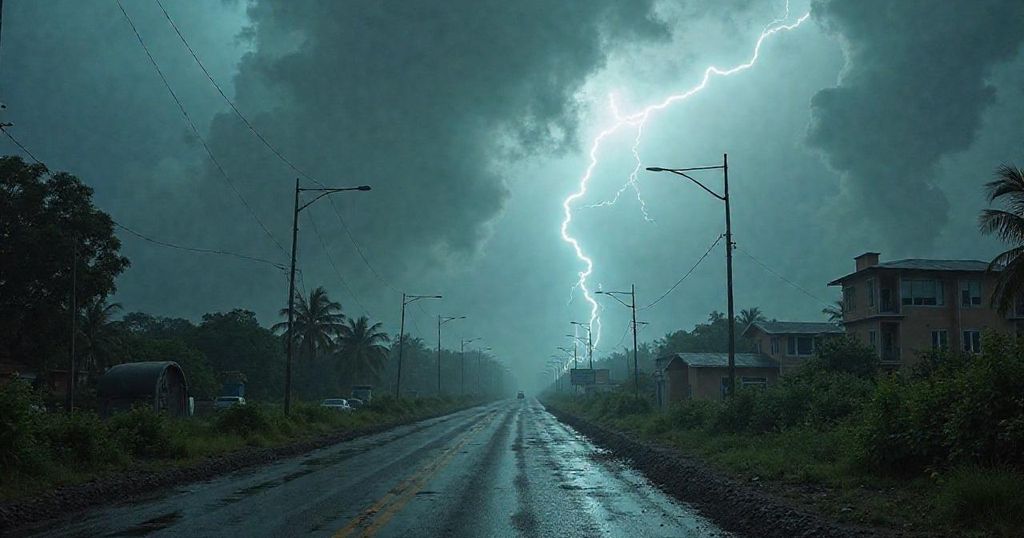Severe Storms in Brazil Leave Eight Dead and Thousands Without Power

Brazil faced violent storms that resulted in at least eight deaths and widespread power outages, particularly in São Paulo, where storms caused extensive damage. The storms followed a historic drought, leaving millions without electricity and prompting protests from residents distressed by ongoing outages. Many welcomed the rain as relief after an extended dry period, amidst rising concerns over climate change and its effects.
On Friday, Brazil experienced violent storms resulting in the unfortunate deaths of at least eight individuals and leaving thousands without electrical power. The central and southeastern regions of the nation were particularly affected, facing wind gusts of up to 100 kilometers per hour (60 mph) and daily rainfall reaching 10 centimeters (4 inches), as reported by the National Institute of Meteorology. The majority of fatalities, specifically seven, occurred in São Paulo, the nation’s most populous state, primarily due to falling trees and collapsing infrastructure caused by the severe winds and intense rainfall. Residents in southeastern Brazil described the rain as short-lived but extremely powerful. Numerous areas of São Paulo have been plunged into darkness since Friday, with significant issues also reported concerning the water supply. The energy company Enel indicated that over 1.3 million residences and businesses are still without electricity, with efforts to restore power expected to continue until Monday. In response to the prolonged power outages, residents of Parque São Roberto neighborhood in São Paulo state staged a protest on Saturday, using pots and pans to express their frustration over more than 24 hours without electricity. In the capital city, Brasília, a tragic incident occurred at the military police headquarters where one soldier lost his life and another sustained injuries due to the storms. Local media highlighted the severity of the rainfall, with reports of officials within Brazil’s congress—the Chamber of Deputies—resorting to umbrellas in response to leaks in the building’s roof. Despite the destruction, many residents in Brasília welcomed the downpour as a long-awaited respite following a record-breaking dry spell that lasted over 165 days. The recent storms emerged in the wake of Brazil’s worst drought on record, which experts attribute primarily to the impacts of climate change and the El Niño phenomenon. The prolonged dry period had exacerbated wildfires across the nation, devastating vast areas of the Amazon rainforest and Pantanal wetlands, and causing substantial smoke-related issues in urban centers. Government data indicated that the number of wildfires in the Amazon reached a two-decade peak for the month of July.
This severe weather event occurred after Brazil experienced its most significant drought in history, attributed to climate changes and the effects of the El Niño weather phenomenon. The drought has led to rampant wildfires across the nation, severely affecting the Amazon rainforest and Pantanal wetlands. The combination of extreme drought followed by intense storms has created a precarious situation for many regions in Brazil, particularly concerning energy supply and infrastructure.
In summary, the severe storms that swept across Brazil have resulted in multiple fatalities, left millions without power, and triggered significant infrastructural challenges. While the storms provided much-needed rain following a prolonged drought, they also revealed the vulnerabilities of Brazil’s infrastructure to extreme weather events. As climate change continues to impact weather patterns, the country faces ongoing challenges related to both drought and flooding.
Original Source: www.bbc.com







